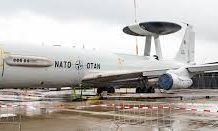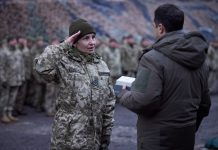
A relic from the Cold War era, the British Royal Air Force’s flagship Tornado F2 ADV fighter-bomber interceptor is preparing to make a transatlantic journey to its new home in the United States. Originally developed by British Aerospace in the 1970s, this specific aircraft, known as ZD902, was initially designed for air defense purposes.
After its retirement from active service by the RAF in 2012, ZD902 remained grounded until recently. American billionaire Jared Isaacman has now acquired this unique piece of aviation history and announced plans to restore it to flying condition within the next year. Isaacman, who already owns a Soviet MiG-29, hinted at a potential reunion in the skies of these Cold War adversaries.
ZD902 has a storied past, having been stationed at the British test center in Boscombe Down before being put up for sale in 2016 by Jet Art Aviation. It had since been stored at Leeds East Airport until Isaacman’s acquisition.
The Tornado F2A ADV is equipped with long-range air-to-air missiles such as the AIM-120 AMRAAM and Skyflash, capable of targeting enemy aircraft beyond the reach of the MiG-29’s short-range missiles. This capability allows the Tornado to engage and neutralize MiG-29s before they can close in for close-quarters combat.
While the Tornado F2A ADV may not match the MiG-29 in speed or agility, it excels in high-speed interception and sustained supersonic flight, enabling rapid response to threats and effective protection of large areas and critical targets.
Featuring a dual-seat configuration, the Tornado assigns roles between the pilot and the weapons systems officer (WSO), with the WSO managing radar and weapons systems, thereby enhancing operational effectiveness in complex combat scenarios. This collaborative approach provides the Tornado with an advantage over the single-seat MiG-29.
Moreover, integrated into NATO’s broader air defense network, the Tornado F2A ADV leverages real-time data from AWACS aircraft and ground radar stations, enhancing situational awareness and coordination during engagements. This collaborative capability proves crucial in countering advanced adversaries like the MiG-29.





